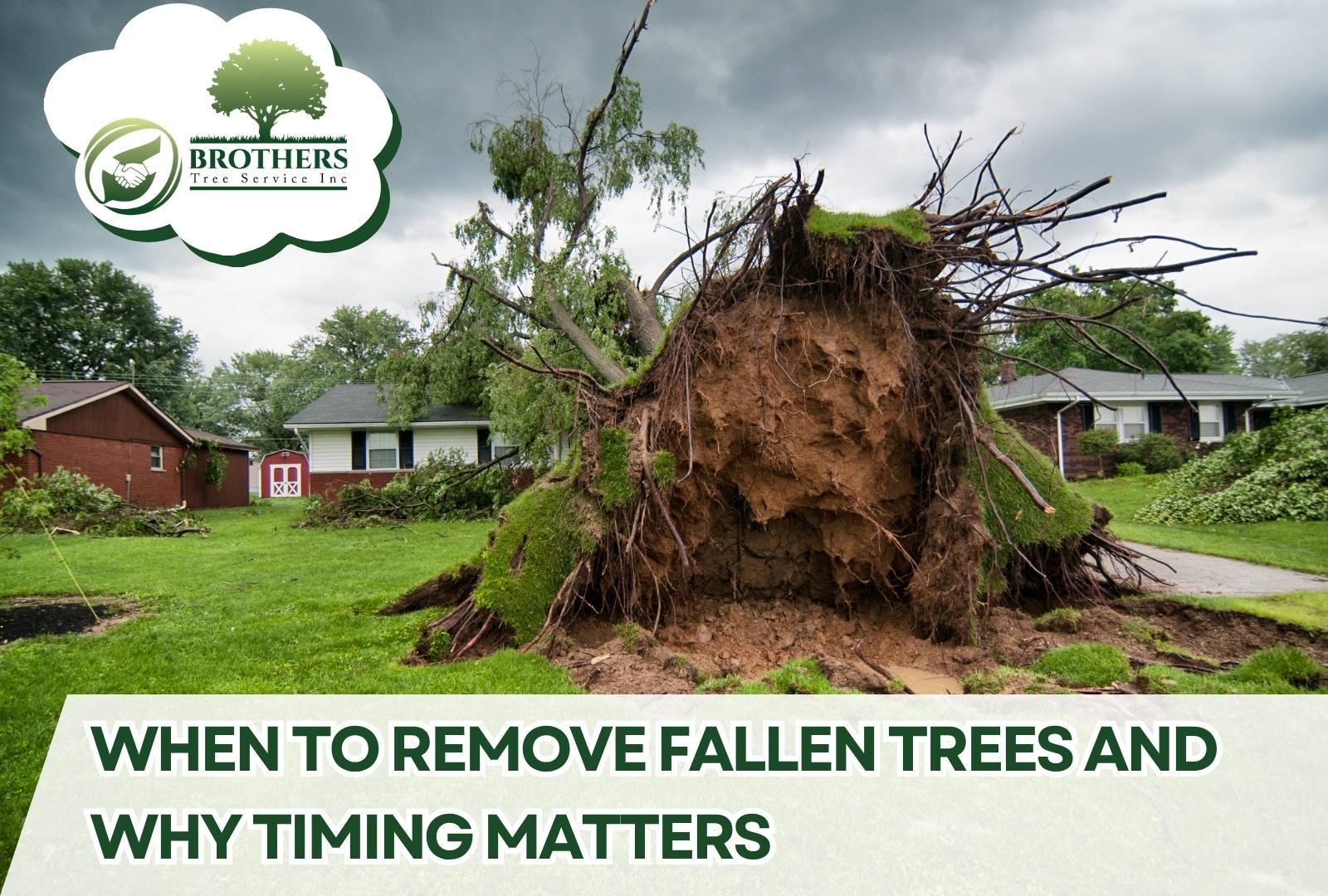
When a tree comes down during a storm or unexpectedly from decay, it’s important to know when to remove fallen trees and how to handle the situation safely. Acting too late can lead to more damage or delay your insurance process, while rushing in too early without precautions can create new risks.
At Brother’s Tree Service INC, we help homeowners respond to tree emergencies with speed and safety. This article covers the right time to remove a fallen tree, what affects the removal process, and how to understand fallen tree removal cost based on your specific situation.
How to Decide When Tree Removal Is Necessary
Not all fallen trees require immediate removal, but in most cases, action should be taken quickly, especially if the tree is blocking access, leaning on structures, or near power lines. If the tree presents a hazard to people, property, or utilities, you should schedule removal as soon as it’s safe to do so.
Our tree safety guide outlines what to look for after a tree falls, including unstable limbs, hanging branches, or visible damage to surrounding areas. Even trees that seem harmless may shift or collapse further if left unattended.
When you’re unsure about the urgency, a quick inspection from a professional can help. Our team offers prompt tree removal in Escondido and nearby areas to assess and handle cleanup before conditions get worse.
Situations That Require Immediate Tree Removal
Some fallen trees create more serious problems than others. A tree resting on a roof or vehicle, entangled with electrical lines, or completely blocking your driveway should be addressed without delay. Waiting can lead to structural issues, safety hazards, or interfere with emergency services access.
Storm-damaged trees are especially unpredictable. A tree may be partially uprooted or cracked inside the trunk—risks that aren’t always visible at first glance. Our article on tree removal safety best practices explains how trained professionals handle high-risk removals step by step.
What Impacts Fallen Tree Removal Cost
Several variables affect how much it costs to remove a fallen tree. The main factors include the tree’s size, the location of the fall, the complexity of the removal, and whether special equipment like cranes or rigging systems is needed.
Timing also plays a role. Emergency removals at night or during storm events may require faster deployment, which can influence cost. Fallen trees that rest against structures or are entangled in other trees often require extra time and effort. If your tree has shown warning signs in the past, our tree removal signs guide can help identify issues before they turn into high-cost emergencies.
FAQs – When to Remove Fallen Trees
Can I wait a few days before removing a fallen tree?
It depends on the situation. If the tree is not causing immediate harm, you may have time. However, trees that are unstable or resting on structures should be removed as soon as possible.
Who pays for fallen tree removal?
If the tree damaged your property, homeowners insurance may cover part or all of the cost. It’s important to check your policy and document everything with photos.
Is it safe to move a fallen tree myself?
Only if it’s small and completely on the ground. Larger trees or those near structures should be handled by professionals for safety reasons.
Let Us Help You Remove Fallen Trees Safely
Knowing when to remove fallen trees is a critical part of protecting your property and keeping your family safe. Brother’s Tree Service INC is ready to help with fast response, expert assessments, and professional cleanup that minimizes risk.
Need immediate assistance? Visit our emergency tree removal page to schedule service today.
